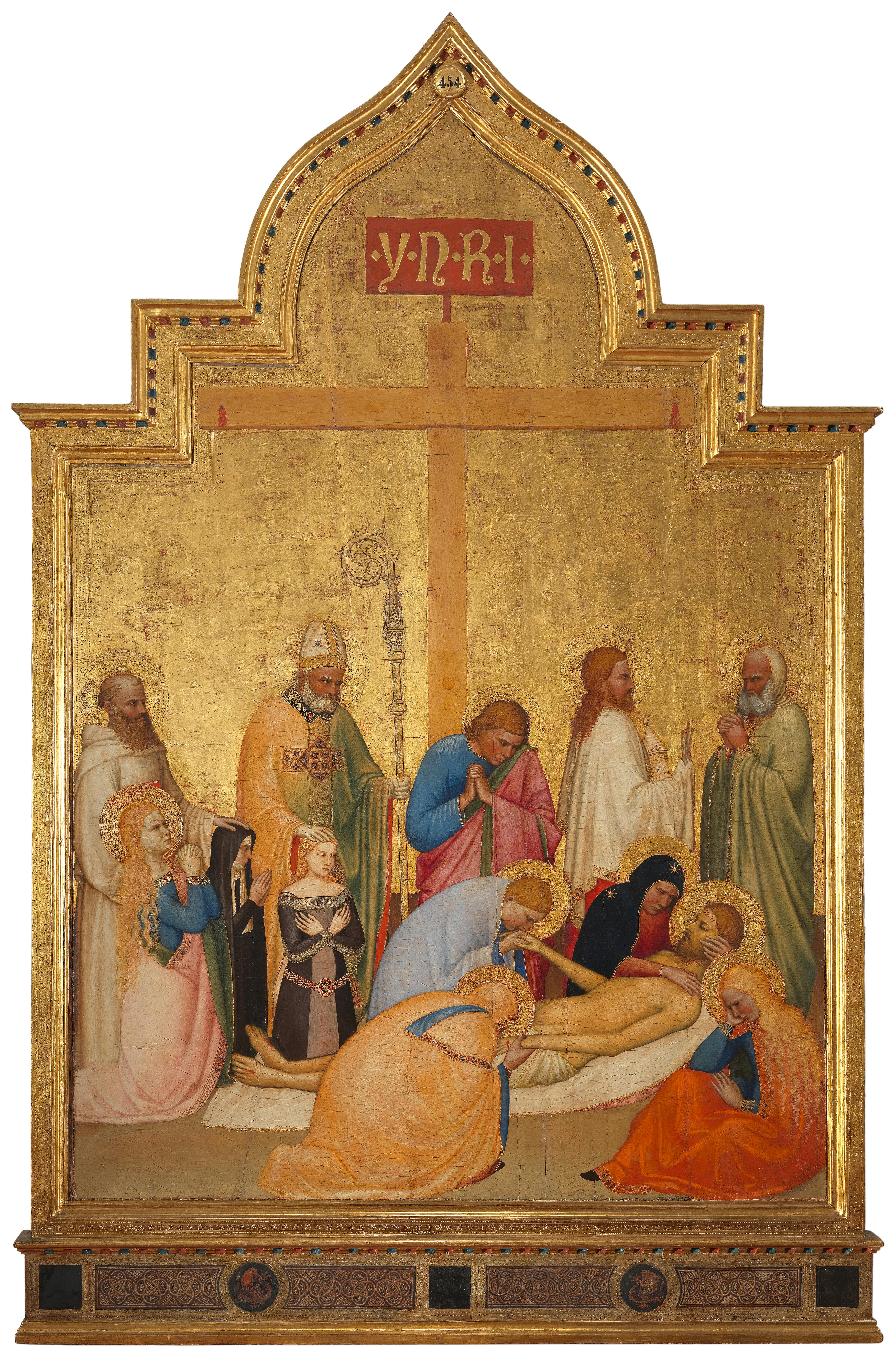Lamentation over the Dead Christ
Giotto di maestro Stefano, known as Giottino (documented in Florence in 1368 and Rome in 1369)
The bloodless body of Jesus Christ deposed from the cross is lovingly embraced by his mother Mary, while two pious women kiss the Saviour's hands. Participating in the event are the Apostle John, standing in the center of the composition, and Mary Magdalene, who is weeping disconsolately as she sits at the bottom right, recognizable by her long blond hair and red dress. The two figures on the right are Joseph of Arimathea and Nicodemus, who, according to the Gospels, gave their help during the deposition and burial of Christ. The first one is holding a pyx with the balm for anointing Christ's body and the nails with which Jesus was crucified; as a sign of deference, he has the hand veiled by his mantle. In the background of the composition stands the cross, surmounted by a scroll with the letters YNRI, an abbreviation for 'Jesus Nazarenus Rex Iudeorum'.
On the left, kneeling, two praying female figures are contemplating the scene. Due to the absence of the halo of holiness and their smaller size compared to the other figures, the two women are probably those who commissioned the painting; one of them is cloaked in black (perhaps a widow), while the other is an elegant blond maiden. They are presented and protected by a white-dressed monk and by a bishop, maybe the French Remigio, patron of the church from which the work came. The absence of specific inscriptions and attributes makes it difficult to identify the other two saints and the kneeling saint on the left, whose face is contracted in grief at the death of the Saviour.
The panel, purchased for the Uffizi Gallery in 1842, belonged to the parish church of San Remigio, a medieval building that according to tradition was erected to help the pilgrims travelling from France to Rome. Documents from the 16th century report that the painting was placed in the partition, which is the architectural structure dividing the choir, intended for the clergy, from the part of the church that accommodated lay people.
This work is one of the very rare surviving masterpieces by the painter Giottino, one of the greatest personalities among Tuscan painters in the third quarter of the 14th century and a skilful performer of the 'sweet and united painting' that was widely appreciated by Giorgio Vasari in his work Lives of the Artists. Without renouncing the solemnity and solid volumes of Giotto's language, who renewed Italian painting, Giottino focused on the tactile rendering of the scene, preferring delicate chiaroscuro passages and colours with a warm and luminous tone, with effects of remarkable naturalism. The painting's gilded background erases any reference to the landscape or setting, but the sense of depth is suggested by the multi-layered arrangement of the figures, who express themselves through measured gestures and contrite facial expressions.
L. Marcucci, Gallerie Nazionali di Firenze. I dipinti toscani del XIV secolo, Roma 1965, pp. 88-90 scheda n. 50; L. Bellosi, Giottino e la pittura di filiazione giottesca intorno alla metà del Trecento, in “Prospettiva”, CI, 2001, pp. 19-40; F. Baldini, scheda n. 38 in L’eredità di Giotto. Arte a Firenze 1330-1375, a cura di A. Tartuferi, Firenze 2008, p.172; M. Bandini, Vestigia dell’antico tramezzo di San Remigio, “Mitteilungen des Kunsthistorisches Institutes in Florenz”, 54, n.2, 2010-2012, pp. 211-230
